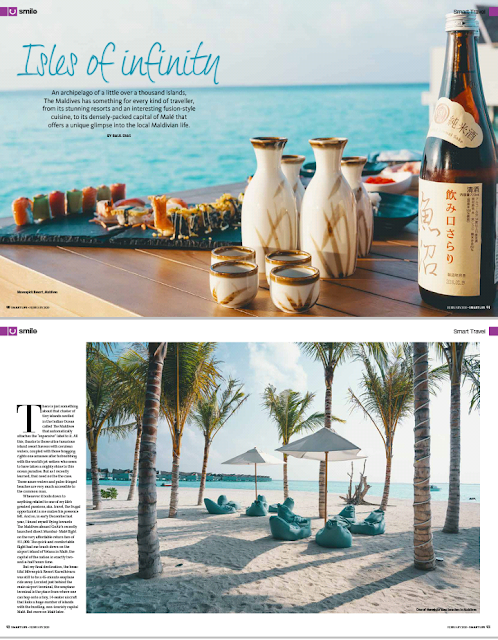With a menu full of yummy pizzas in a range of sizes more than making up for the uninspired service and lacklustre ambience, this new mid-town pizza place gets some of its basics right, never mind its rather misleading name.
By Raul Dias
Over the years we’ve come to realise that expectations can be dangerous things. Especially in this context, when pitted against one of the most interesting iterations of the humble pizza pie—the Chicago-style deep dish. That gooey 2-inch high creation crammed full of molten cheese and other scrumptious treats like good old pepperoni and spicy chicken sausage is made famous by iconic Chicago pizza places like Lou Malnati’s and Giordano’s.
Driving by Mahim’s main L.J. Road, seeing this new pizza place take shape over the last couple of months, we couldn’t wait to give it a try. Hoping fervently that we’d finally find the deep dish at Chicago Pizza. After all, it’s even named after it. We’re sad to report that we didn’t! There’s everything but the said deep dish pizza on their rather extensive menu.
Greeted by an empty restaurant and a deserted counter, we sat ourselves down on the uncomfortably low chairs, fronted by an even lower table. It would be almost ten minutes later that the restaurant’s staff finally emerges from their hibernation in the back kitchen and we are beckoned over to the counter to place our order in typical QSR style. All payments made upfront; we waited another half an hour to see some action on our table.
Choosing the large (14-inch) thin crust Italian pepperoni pizza (Rs 529) from a wide range of sizes that range from a single slice (Rs 189) to an extra-large (Rs 909 for an 18-inch) one proved to be a good decision. Bursting with the gooey umami goodness of cheese with the spicy hit of the pork pepperoni, we were in love with this pizza from the first bite. Equally scrumptious was the medium sized (9-inch) four cheese pizza (Rs 269) where one could taste the distinct flavours of the Monterrey, cheddar, gouda and mozzarella cheeses in this creamy, tomato-sauce bereft pizza.
Sadly, our trio of mocktails were rather disappointing. While the Indian spice soda (Rs 99) was anything by spicy, the virgin mojito (Rs 99) was a watery, over-sugared miss. Faring a tad better, though flat and minus the fizz, was our strawberry cooler (Rs 99).
While wishing the pizzaiolo (pizza chef) was a tad more generous with their light-handed sprinkling of mini chicken meatballs, we still loved the herby taste of the large chicken meatball pizza (Rs 399). Packed with the punch of robust Indian flavours, our medium sized rustic mushroom pizza (Rs 269) rounded off our pizza action for the day perfectly with its savoury goodness.
Choosing to go a little ‘off-piste’ in our final selection of savoury items, the Italian chicken pasta in a white sauce (Rs 259) was composed of perfectly al dente penne with BBQ chicken morsels, corn and jalapenos, giving both the dish and us a spicy send off!
AT: Chicago Pizza, 148-150 Kadriwadi, L.J. Road, Mahim West.
TIME: 10 am to 11.30 pm
CALL: 9833783615
(An edited version of this review appeared in the 24th February 2020 issue of the Mid-Day newspaper, India on page 21 https://www.mid-day.com/articles/slice-of-goodness/22638243)
By Raul Dias
Over the years we’ve come to realise that expectations can be dangerous things. Especially in this context, when pitted against one of the most interesting iterations of the humble pizza pie—the Chicago-style deep dish. That gooey 2-inch high creation crammed full of molten cheese and other scrumptious treats like good old pepperoni and spicy chicken sausage is made famous by iconic Chicago pizza places like Lou Malnati’s and Giordano’s.
Driving by Mahim’s main L.J. Road, seeing this new pizza place take shape over the last couple of months, we couldn’t wait to give it a try. Hoping fervently that we’d finally find the deep dish at Chicago Pizza. After all, it’s even named after it. We’re sad to report that we didn’t! There’s everything but the said deep dish pizza on their rather extensive menu.
Greeted by an empty restaurant and a deserted counter, we sat ourselves down on the uncomfortably low chairs, fronted by an even lower table. It would be almost ten minutes later that the restaurant’s staff finally emerges from their hibernation in the back kitchen and we are beckoned over to the counter to place our order in typical QSR style. All payments made upfront; we waited another half an hour to see some action on our table.
Choosing the large (14-inch) thin crust Italian pepperoni pizza (Rs 529) from a wide range of sizes that range from a single slice (Rs 189) to an extra-large (Rs 909 for an 18-inch) one proved to be a good decision. Bursting with the gooey umami goodness of cheese with the spicy hit of the pork pepperoni, we were in love with this pizza from the first bite. Equally scrumptious was the medium sized (9-inch) four cheese pizza (Rs 269) where one could taste the distinct flavours of the Monterrey, cheddar, gouda and mozzarella cheeses in this creamy, tomato-sauce bereft pizza.
Sadly, our trio of mocktails were rather disappointing. While the Indian spice soda (Rs 99) was anything by spicy, the virgin mojito (Rs 99) was a watery, over-sugared miss. Faring a tad better, though flat and minus the fizz, was our strawberry cooler (Rs 99).
While wishing the pizzaiolo (pizza chef) was a tad more generous with their light-handed sprinkling of mini chicken meatballs, we still loved the herby taste of the large chicken meatball pizza (Rs 399). Packed with the punch of robust Indian flavours, our medium sized rustic mushroom pizza (Rs 269) rounded off our pizza action for the day perfectly with its savoury goodness.
Choosing to go a little ‘off-piste’ in our final selection of savoury items, the Italian chicken pasta in a white sauce (Rs 259) was composed of perfectly al dente penne with BBQ chicken morsels, corn and jalapenos, giving both the dish and us a spicy send off!
AT: Chicago Pizza, 148-150 Kadriwadi, L.J. Road, Mahim West.
TIME: 10 am to 11.30 pm
CALL: 9833783615
(An edited version of this review appeared in the 24th February 2020 issue of the Mid-Day newspaper, India on page 21 https://www.mid-day.com/articles/slice-of-goodness/22638243)









